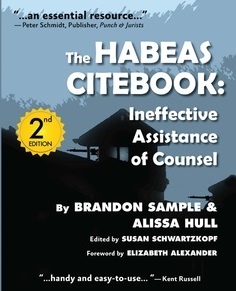Nebraska Supreme Court Clarifies Procedure for Crediting Jail Time to Multiple Contemporaneously-Imposed Sentences
In a case of first impression, the Supreme Court of Nebraska clarified the procedure to be used when crediting time spent in pretrial incarceration against multiple contemporaneously-imposed sentences pursuant to Neb. Rev. Stat. § 83-1.106, regardless of whether they are to be served consecutively or concurrently. The Court instructed that the time is to be credited only once and applied to the aggregate of the sentences regardless of whether they are concurrent or consecutive.
Katrell M. Nelson was twice arrested for possession of a deadly weapon by a prohibited person in separate incidents that occurred seven months apart. He spent nine days in jail on the earlier charge before being released on bond. After being arrested for the later charge, he spent an additional 232 days in jail on both charges before finalizing a plea agreement. Pursuant to the plea agreement, he was sentenced to 6 to 10 years in each case with the sentences to run concurrently, i.e., concurrent prison terms of identical length. The sentencing judge credited 241 days of time served to the earlier case but no time served to the later case.
Nelson timely appealed the denial of any credit for the later case. The Nebraska Supreme Court ordered the appeal transferred to its docket. The issue of first impression was how a sentencing court should apply available credit for time served when a court imposes concurrent prison sentences of identical length.
The Court noted that, pursuant to § 83-1.106, a defendant has a statutory entitlement to credit against a sentence for time spent in custody on the charge that led to the sentence. Further, the number of days to be credited is an “absolute and objective” number established by the record, and the sentencing court has no discretion to issue more or less credit. State v. Rivera-Meister, 14 N.W.3d 1 (Neb. 2024).
The Court stated that the “foundational principles” for awarding time credit were established in State v. Sanchez, 520 N.W.2d 33 (Neb. Ct. App. 1994): “[c]redit for pretrial incarceration is properly granted only against the aggregate of all terms imposed … and the total length of time to be served under the sentences is reduced by the time already served before sentencing” for consecutive sentences.
In dicta, the Sanchez Court opined: “Where concurrent sentences are given, credit, in effect, applies against each sentence. This must be done because the term of the longest sentence determines the total length of time the person is held. However, the end result is the same as in the consecutive sentence situation where credit is applied against only the first sentence.”
In State v. Barnes, 688 N.W.2d 594 (Neb. 2004), the court ruled that, where time credit is available for two concurrent sentences, it is to be awarded to the longer sentence. This is because “the longest sentence determines the offender’s actual length of time in prison, and credit is ‘in effect’ given to each sentence. Thus, when concurrent sentences are imposed, credit is applied once, and the credit applied once, in effect, is applied against each concurrent sentence.”
Subsequently, the Supreme Court summarized the governing principles from Sanchez and Barnes as follows: “[W]ith consecutive sentences, periods of incarceration are credited against the aggregate of all terms imposed. And with concurrent sentences, such periods are credited against the longest sentence, but are, in effect, credited applied against all the sentences.” State v. Willis, 826 N.W.2d 581 (Neb. 2013).
The problem with this interpretation is it does not address how time should be credited when both concurrent sentences are of equal length, the Court observed. In addressing that issue, the Court ruled that the trial court did not err in applying the time credit only once. However, the Supreme Court’s previous rulings were confusing and promoted a seemingly different method of applying time credits to consecutive and concurrent sentences.
In clarifying its previous rulings, the Court stated: “We now hold that when a court imposes multiple sentences contemporaneously, whether such sentences are ordered to be served consecutively or concurrently, all available credit for time served under § 83-1.106(1) is applied just once, to the aggregate of all terms imposed.”
The Court further stated: “We also clarify that when a court applies all available credit against the aggregate of all sentences imposed contemporaneously, there is no reason to mechanically attach such credit to any particular sentence. The formality of identifying just one sentence to receive all available credit is neither accurate, nor necessary, when all available credit is being applied to the aggregate of all terms imposed.”
Finally, the Court instructed that “although courts use aggregation principles when applying available jail credit, precision is still required when identifying how many days a defendant spent in custody, and on which charges, for purposes of calculating available credit under § 83-1.106(1).”
After clarifying the sentencing framework for applying available credit to multiple sentences imposed contemporaneously, the Court applied it to the current case. It noted that the record shows that Nelson had 241 days of available credit under § 83-1.106(1), which “must be applied, just once, to the aggregate of all terms imposed.” Apparently, that was the sentencing court’s intent, “but its oral pronouncement, and the terms of the separate sentencing orders, said something different,” according to the Court.
The Court modified the sentencing order in the later case to read, “Nelson is entitled to credit for 241 days for time served against the aggregate of all terms imposed” in both cases. The Court directed the sentencing court “to modify the commitment accordingly using the same language.”
Accordingly, the Court modified the sentencing order and otherwise affirmed the judgment of the sentencing court. See: State v. Nelson, 16 N.W.3d 883 (Neb. 2025).
Writer’s note: This outcome is actually more favorable than what Nelson requested: crediting each sentence individually with the time served for that sentence. Using the court’s method, he gains nine days of credit on the later sentence that he served prior to his arrest on the charge that led to that sentence.
As a digital subscriber to Criminal Legal News, you can access full text and downloads for this and other premium content.
Already a subscriber? Login
Related legal case
State v. Nelson
| Year | 2025 |
|---|---|
| Cite | 16 N.W.3d 883 (Neb. 2025) |
| Level | State Supreme Court |





